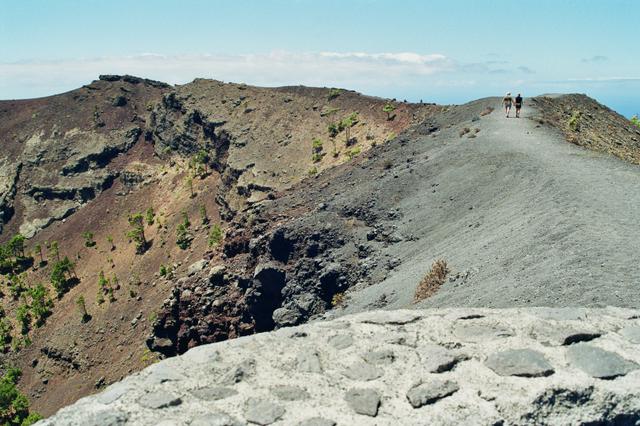
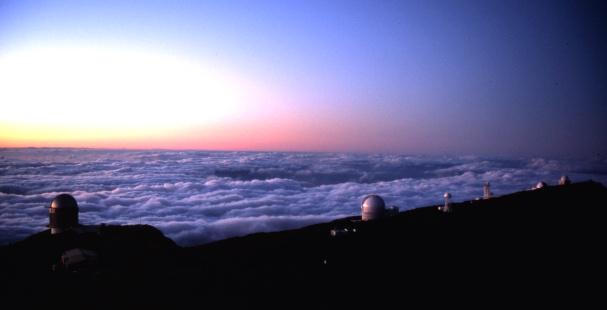 La Palma is an island of the Canary Islands, which are an integral part of Spain. It is near Morocco, Cape Verde and the archipelagos of the Azores and Madeira, both Portuguese. The nickname of the island is "La Isla Bonita" (the beautiful island).
La Palma is an island of the Canary Islands, which are an integral part of Spain. It is near Morocco, Cape Verde and the archipelagos of the Azores and Madeira, both Portuguese. The nickname of the island is "La Isla Bonita" (the beautiful island).
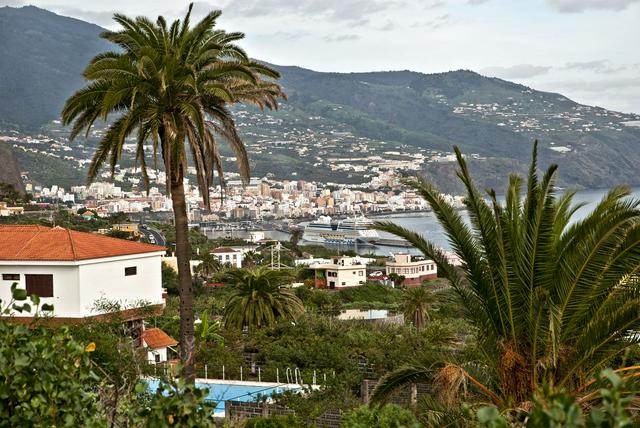
The island has a small population of just under a hundred thousand. It has one major port (Santa Cruz de la Palma), a second small port (Tazacorte) and an international airport (SPC). The populous municipality is Los Llanos de Aridane.
Ethnically the population is mostly Hispanic (actually a mix of Spanish, Berber and Portuguese), with a small number of European immigrants and very small number of African and Eastern European immigrants.
The island exports bananas, rum, gofio and some tobacco, and hosts a major international astronomical observatory .
There are a few nice towns, but the main attraction is the countryside. Spectacular volcanic landscapes reaching up above the clouds with dense vegetation in the valleys make for some spectacular hiking.
The highest point on the island, El Roque de los Muchachos (2426m -- about 8000 feet), is easily accessible by car most of the year and the views from there are spectacular and provide a good introduction to the geography of the island (note that access is restricted at night as this is the site of a major international astronomical observatory -- always read the signposts -- also note that roads and trails can be closed for a few days in the winter due to snow). There is a very extensive network of marked walking trails over the whole island which are well signposted and walking maps are available from the tourist office in Santa Cruz.
Along the northeast coast, you'll find masses of intricately terraced crops (especially bananas) interlaced with small towns and villages.
In the middle of the island there is Caldera de Taburiente, a huge erosion crater which is one of the biggest in the world. Guided hikes to the caldera are available. During winter months hiking on the river bed in the caldera can be really dangerous because rain can cause flash floods.
The capital of the island, Santa Cruz, has lots of well preserved old buildings and cobblestone streets. Along Avenida Maritima you can see old Canarian balconies made from the Canary pine.
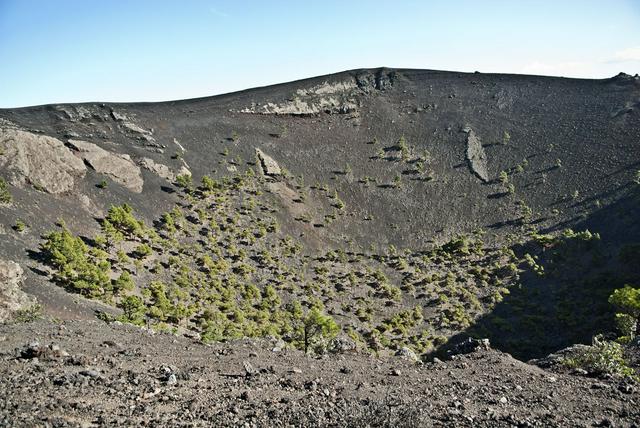
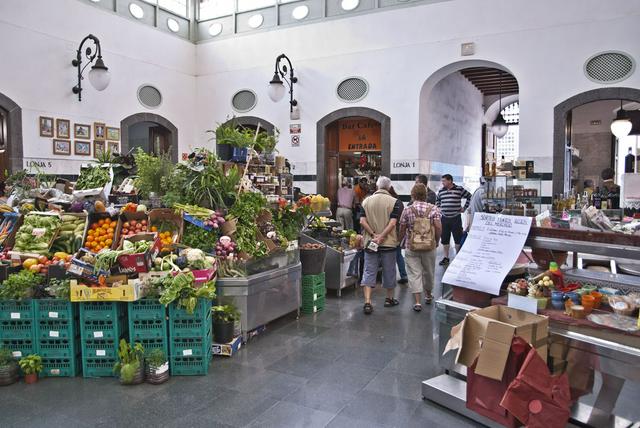
- Observatorio del Roque de los Muchachos.
- Lighthouse of Fuencaliente.
- National Park de la Caldera de Taburiente.
- Parque Arqueologico de Belmaco.
- Roque de Los Muchachos.
- Charco Azul.
- Eco Finca Platano Logico. A mostly organic banana orchard with visitor center.
- La Palma Maritime Museum, Plaza de la Alameda (Santa Cruz de la Palma, +34 922 411 787.
- Parque Cultural La Zarza, San Antonio, Garafia, +34 922 69 50 05.
- Archaeological Museum Benahoritas, Los Llanos de Aridane.
Observatorio del Roque de los Muchachos.
Lighthouse of Fuencaliente.
National Park de la Caldera de Taburiente.
Parque Arqueologico de Belmaco.
Roque de Los Muchachos.
Charco Azul.
Eco Finca Platano Logico. A mostly organic banana orchard with visitor center.
La Palma Maritime Museum, Plaza de la Alameda (Santa Cruz de la Palma, +34 922 411 787.
Parque Cultural La Zarza, San Antonio, Garafia, +34 922 69 50 05.
Archaeological Museum Benahoritas, Los Llanos de Aridane.
-dbavK.medium.jpg)
- Los Tilos laurel forest. If possible get four wheel taxi up to start of walk. Then walk around the canal (what in Madeira would be called a levada) following the contours of a steep tree-lined barranco walking through 13 tunnels (stooping to avoid hitting your head). Tunnel number 12 is wet inside - one guide book described it as like a power-shower. Then down through the laurisilva forest (a tiring but stunning descent of about ). Also don't miss the lookout - a volcanic dyke about two feet wide with sheer drops on both sides, but protected by handrails with totally stunning 360 degree views - makes Symond's Yat look a bit pathetic. Details of the walk are in Walk! La Palma and also in the Sunflower book guide though take the times given for the walk with a pinch of salt - this took us about 6 hours. But well worth the effort. See picture at right.
- Ruta del los Volcanos. Part of the GR 131 long distance path - along the length of the Cumbre Vieja, a route with fabulous views all round, and with volcanic craters for most of the length. Again, quite a demanding walk on a hot day, and dust kicked up by walking companions gets everywhere, but a stunningly memorable walk.
- GR130 walking route. For the fit and enthusiastic. It goes right around La Palma mainly on the historic donkey paths. It takes a minimum of seven days which would require walking around eight hours of tough walking daily. If possible take at least a couple of days extra. Can be done on a budget by using pensions where possible. The constantly changing scenery is stunning, you will meet some interesting locals on the way and it is an experience to remember.
- The island also organsises the Transvolcania which is a run up the Volcano route - and beyond. Check out http://www.senderosdelapalma.com/ for info on all walking routes.
Los Tilos laurel forest. If possible get four wheel taxi up to start of walk. Then walk around the canal (what in Madeira would be called a levada) following the contours of a steep tree-lined barranco walking through 13 tunnels (stooping to avoid hitting your head). Tunnel number 12 is wet inside - one guide book described it as like a power-shower. Then down through the laurisilva forest (a tiring but stunning descent of about ). Also don't miss the lookout - a volcanic dyke about two feet wide with sheer drops on both sides, but protected by handrails with totally stunning 360 degree views - makes Symond's Yat look a bit pathetic. Details of the walk are in Walk! La Palma and also in the Sunflower book guide though take the times given for the walk with a pinch of salt - this took us about 6 hours. But well worth the effort. See picture at right.
Ruta del los Volcanos. Part of the GR 131 long distance path - along the length of the Cumbre Vieja, a route with fabulous views all round, and with volcanic craters for most of the length. Again, quite a demanding walk on a hot day, and dust kicked up by walking companions gets everywhere, but a stunningly memorable walk.
GR130 walking route. For the fit and enthusiastic. It goes right around La Palma mainly on the historic donkey paths. It takes a minimum of seven days which would require walking around eight hours of tough walking daily. If possible take at least a couple of days extra. Can be done on a budget by using pensions where possible. The constantly changing scenery is stunning, you will meet some interesting locals on the way and it is an experience to remember.
The island also organsises the Transvolcania which is a run up the Volcano route - and beyond. Check out http://www.senderosdelapalma.com/ for info on all walking routes.
Goat - cabrito (young goat, usually fried) Cabra (older goat, usually stewed). bienmesabe - means 'tastes me good' and it does - ground almonds in honey, it is very sweet.
Papas arrugadas, small potatoes boiled in a salty water in their skin, are typical fare on La Palma like they are on the other Canary islands.
Mojos, red (rojo) and green (verde) are also typical on La Palma.
Espresso with sweetened condensed milk, and sometimes a shot of alcoholic liquor is a local speciality -- Barraquito. The island has a large amount of vineyards. Shakespeare mentioned the Malvasia (sweet Malmsey) coming from the Canary Islands. Excellent wine made on La Palma can be bought at specialist outlets and at most supermarkets.
Locally made rum is also available.
112 is the common emergency number.
